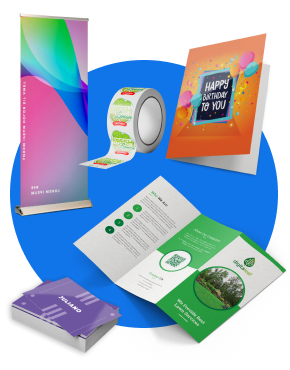In today’s digital age, it’s easy to assume that the best way to market and advertise a business is through online channels such as social media, email marketing, and search engine advertising. However, print advertising still plays a crucial role in expanding a business’s brand and attracting clientele. In this article, we’ll explore the benefits of advertising and marketing a business in print, as well as provide examples of printed advertising uses.
Benefits of Advertising and Marketing a Business in Print
Increased Credibility: Print advertising is often perceived as more credible than digital advertising. This is because print ads are tangible and have a longer lifespan, which means that they are more likely to be seen and remembered by potential customers.
Targeted Reach: With print advertising, businesses can target specific audiences by placing ads in relevant publications or distributing flyers and brochures in specific locations. This allows businesses to reach potential customers who may not be active on digital channels.
Tangibility: Print advertising allows businesses to create physical materials such as flyers, brochures, and business cards that customers can touch and keep. This can help create a more personal connection between businesses and their customers.
Brand Awareness: Print advertising can help businesses build brand awareness by creating consistent messaging and visual elements across different materials. This can help customers recognize and remember the business over time.

Examples of Printed Advertising Uses
Business Stationery: Business Stationery can play a significant role in expanding a business’s brand with clients. By incorporating consistent branding elements such as logos, colors, and typography across various stationery items such as letterheads, business cards, envelopes, and notepads, businesses can create a cohesive and professional image that customers can recognize and remember. This can help build trust and credibility with clients, as well as create a lasting impression that can lead to repeat business and referrals. Additionally, custom printed stationery can serve as a marketing tool by including calls-to-action or promotional messages, further expanding the reach of a business’s brand.
Brochures and Flyers: Brochures and flyers are often used to promote events, sales, or new products. They can be distributed in targeted locations such as malls, events, or public places.
Business Cards: Business cards are an essential printed marketing material that businesses can use to leave a lasting impression on potential customers. They can be distributed during networking events or left in public places.
Signage and Posters: Signage and posters are larger format print advertisements that are often used to promote a brand or product. They are commonly found in high-traffic areas such as roads, public transport stations, or shopping centers.
Direct Mail: Direct mail is a targeted form of print advertising that involves sending promotional materials such as flyers, brochures, or postcards to a specific audience via postal mail.

In conclusion, print advertising is still a valuable marketing tool for businesses looking to expand their brand and attract clientele. It offers benefits such as increased credibility, targeted reach, tangibility, and brand awareness. Examples of printed advertising uses include brochures and flyers, business cards, billboards and posters, magazines and newspapers, and direct mail. By incorporating print advertising into their marketing strategy, businesses can create a well-rounded approach that reaches a wider audience and creates a more memorable brand.

